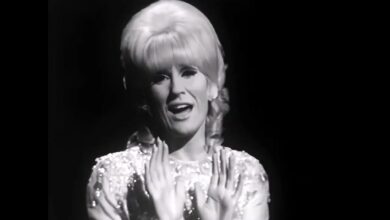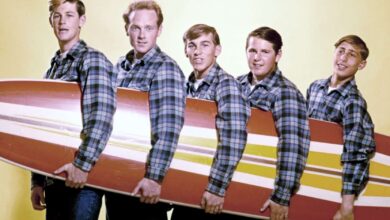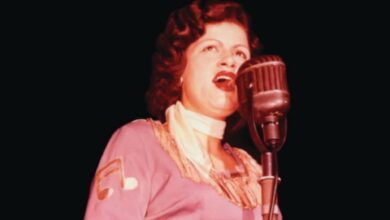Petula Clark’s “I Know a Place” Elevates British Pop Sophistication and Strengthens Transatlantic Appeal in 1965
In 1965, Petula Clark followed up her massive international breakthrough “Downtown” with another radiant anthem of optimism and escape: “I Know a Place.” Though it would always live in the shadow of its predecessor, this effervescent single carved out its own legacy by expanding Clark’s appeal, refining her sonic identity, and proving that lightning could strike twice. Peaking at No. 3 on the Billboard Hot 100 and No. 17 in the UK, “I Know a Place” wasn’t just a chart success—it was a reaffirmation of Clark’s position as a leading force in British pop at a moment when few solo women commanded such global reach. In an era increasingly defined by rebellion and experimentation, the song stood as a testament to elegance, charm, and the enduring power of melodic sophistication.
Born in Surrey, England, Petula Clark had already lived several musical lives by the time “I Know a Place” debuted. A wartime child star who sang to British troops during World War II, she transitioned to teen pop in the 1950s and became a household name in Europe before cracking the English-language market in earnest. What made Clark unique among her contemporaries was her linguistic fluency, vocal control, and the ability to traverse styles without losing her signature warmth. Unlike the grittier British Invasion acts dominating 1960s charts, she presented a poised, cosmopolitan image—more evening dress than leather jacket—and brought a sense of Continental class to pop music.
“I Know a Place” was written and produced by Tony Hatch, the same mastermind behind “Downtown.” The pair had forged one of the decade’s most fruitful creative partnerships, built on a mutual understanding of melody, lyrical tone, and international accessibility. Hatch, deeply inspired by the urban energy of both London and New York, sought to craft a follow-up that would retain “Downtown’s” celebratory spirit but shift the focus to something more intimate and escapist. The result was “I Know a Place,” a song that invites the listener away from their troubles to a haven of music, dancing, and joy—an idealized club or café where “the lights are low” and “folks are laughing.”
The production of the track, recorded in London in early 1965, showcased Hatch’s knack for lush yet economical arrangement. He layered piano, horns, subtle string textures, and a lightly swinging rhythm section to build an atmosphere that sparkled without overwhelming Clark’s voice. The instrumentation nodded to the sophistication of American adult pop but remained firmly rooted in British sensibility. Clark’s vocal is measured, precise, and infused with a sincerity that keeps the song grounded even as it paints a picture of near-mythical refuge. The chorus soars with controlled ease, offering a blend of excitement and reassurance that became her trademark.
Upon its release, “I Know a Place” quickly climbed the U.S. charts, reinforcing the strength of Clark’s newfound stateside audience. At a time when few British female solo artists had broken into the American Top 10, Clark’s back-to-back hits made her a trailblazer. While it didn’t reach the No. 1 peak of “Downtown,” the song’s strong performance cemented her as more than a one-hit wonder. In the UK, it charted lower, yet remained a staple of her live performances and earned radio play throughout the spring and summer of 1965. In Canada, Australia, and across Europe, the song enjoyed significant airplay, contributing to Clark’s expanding global footprint.
Beyond its chart numbers, “I Know a Place” resonated with listeners because of its thematic resonance. In a decade increasingly marked by anxiety, protest, and social transformation, the song offered an oasis—an imagined sanctuary from the world’s noise and pressures. It appealed especially to women and young adults looking for a space to be themselves, to find joy, or to simply breathe. Unlike many contemporaneous songs, it didn’t moralize or idealize romantic love but instead promised personal liberation through music and environment. This emotional undercurrent helped the song transcend the ephemeral label of “pop” and gave it lasting weight.
For Petula Clark, the song’s success allowed her to expand both her repertoire and her opportunities. She embarked on international tours, starred in a series of television specials, and even began transitioning into film with roles in Finian’s Rainbow and Goodbye, Mr. Chips. “I Know a Place” became a centerpiece of her live shows, often used as the moment when the audience felt most directly invited into Clark’s world. It also gave her the creative freedom to explore more daring material in later albums, including socially conscious tracks and mature ballads that pushed beyond her pop beginnings.
In the broader musical landscape, “I Know a Place” contributed to a softening of genre boundaries. It fused elements of Tin Pan Alley lyricism, light jazz rhythm, and European chanson sensibility into a package that still functioned seamlessly on pop radio. Its success opened doors for other female vocalists—such as Dusty Springfield and Sandie Shaw—to approach adult themes with pop sensibility, and it proved that British female artists could not only compete in America but lead the charge.
Covers of the song appeared sporadically over the years, though none rivaled the depth or elegance of Clark’s original. Notable renditions include those by Eydie Gormé and the Four King Cousins, who offered softened, lounge-like interpretations that underlined the song’s escapist charm. More recently, it has appeared in television and film, often used to evoke mid-60s glamor and cosmopolitan sophistication. Its appearances in retro-themed soundtracks have helped maintain a quiet but consistent presence in public memory.
Around the time of the song’s release, Clark was balancing intense professional success with personal challenges. Her growing fame brought with it media scrutiny and creative pressure, especially as a woman working in male-dominated production environments. Still, she remained steadfast in her collaboration with Hatch, whose respect for her talent provided stability during this high-pressure era. Their partnership was one of rare equality in 1960s pop, with Clark contributing to musical arrangements and shaping her vocal identity with careful deliberation.
Today, “I Know a Place” is often overshadowed by “Downtown,” yet many fans and critics regard it as the more complete song—both musically and emotionally. It’s featured on numerous retrospective collections and remains a favorite among collectors of 60s pop. Its message of comfort and escape continues to resonate, particularly in times of social unease or nostalgia-driven revival.
The song also anticipated later developments in pop production. Its use of layered instrumentation, dynamic shifts, and subtle orchestral touches foreshadowed the baroque pop and soft rock trends of the late 60s and early 70s. It helped lay the groundwork for a kind of sophisticated adult pop that would find champions in artists like Barbra Streisand and Dionne Warwick in the years that followed.
Though Clark has received numerous accolades throughout her life, including a CBE and a place in the Grammy Hall of Fame for “Downtown,” “I Know a Place” deserves equal attention as a milestone in her catalog. It marked a moment when she balanced commercial success with artistic nuance, and when pop music briefly made room for elegance without irony.
In the end, “I Know a Place” remains memorable not just for its catchy melody, but for the emotional world it builds—a world of warmth, welcome, and possibility. It’s a song that extends an invitation across time, a reminder that even in the most uncertain eras, there’s always a place to feel understood, and a voice to guide us there with grace. For Petula Clark, it was another brilliant chapter in a storied career; for listeners, it remains a song that still knows how to open doors.



